The bustle of urban life gets overbearing at times, driving city dwellers into the wild in search of a hideout which would fill them with awe and inspiration from Nature. We have selected several retreats that will allow one literally be fully immersed in sweeping landscapes – and do it with great respect to Nature itself.


Refugium Fleinvær by Rintala Eggertsson Architects and TYIN Tegnestue (ph: Pasi Aalto)
Norway-based Rintala Eggertsson Architects collaborated with TYIN Tegnestue to design Refugium, a cluster of buildings serving as a hideout for tourists and an artist residence in Norway.
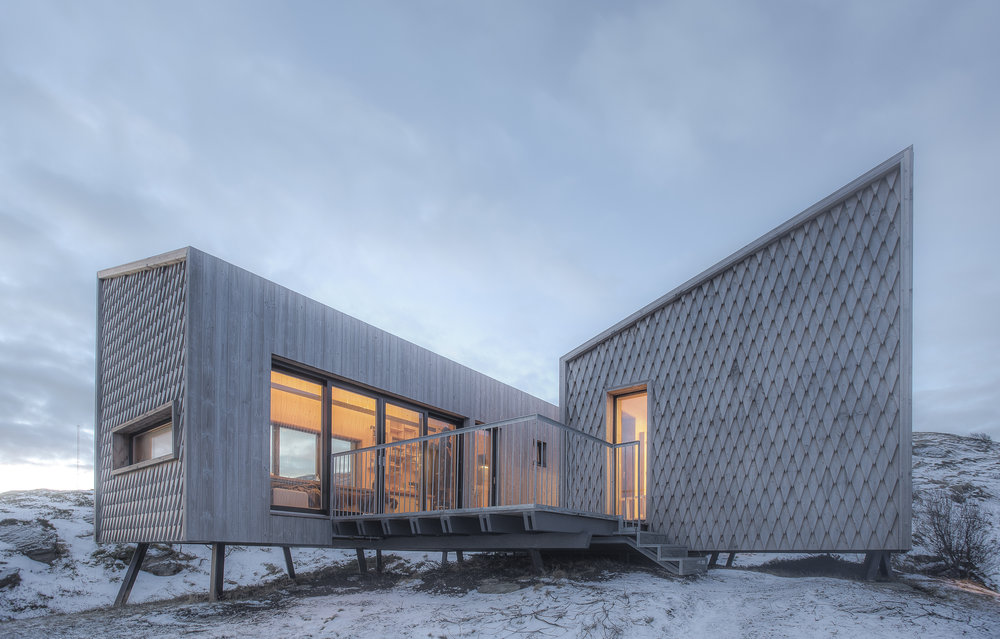
Refugium Fleinvær by Rintala Eggertsson Architects and TYIN Tegnestue
Located on the small island of Fleinvær, the project comprises nine small holiday homes, as well as a concert hall and a canteen, elevated above the ground to suit the isle’s barren topography. Functional and ergonomic, the stilted timber cabins, which step down the hill towards the sea, feature cosy interiors with wooden furnishings, providing those staying in them with “silence, inspiration, and absolute, honest encounters with nature”.
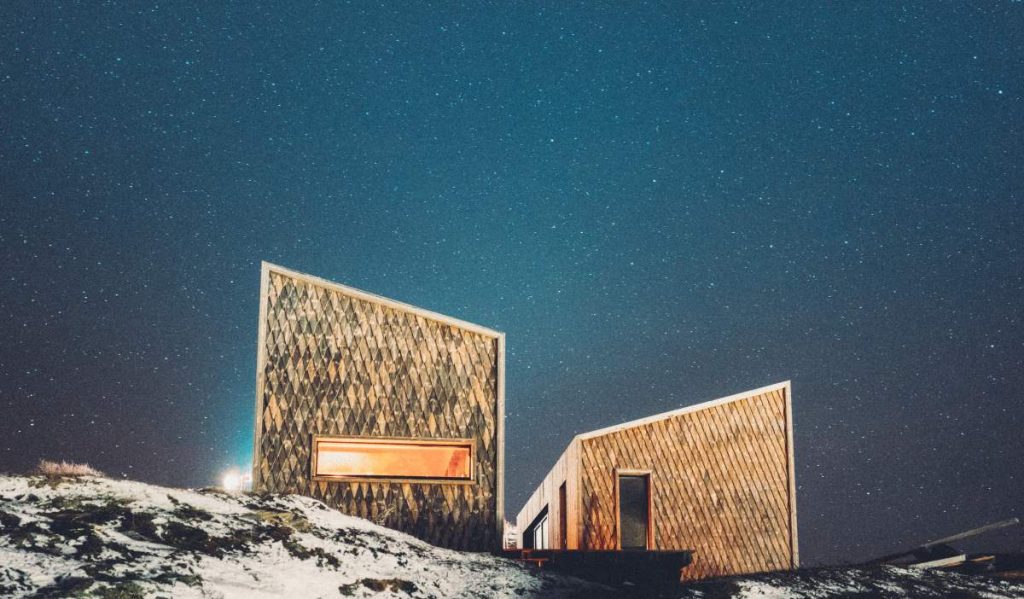
Refugium Fleinvær by Rintala Eggertsson Architects and TYIN Tegnestue
Aiming to establish a balance between the buildings and the landscape, the architects have taken care to inflict as little impact on the island as possible. Their careful approach, featuring good pathways, space between the houses, and a common fireplace, steers the traffic away from the Fleinvaer’s most sensitive areas. The foundations are also minimized, consisting of steel columns curved at 15 degrees angles, which allows to achieve precise pointed foundations without major interference with the ground.
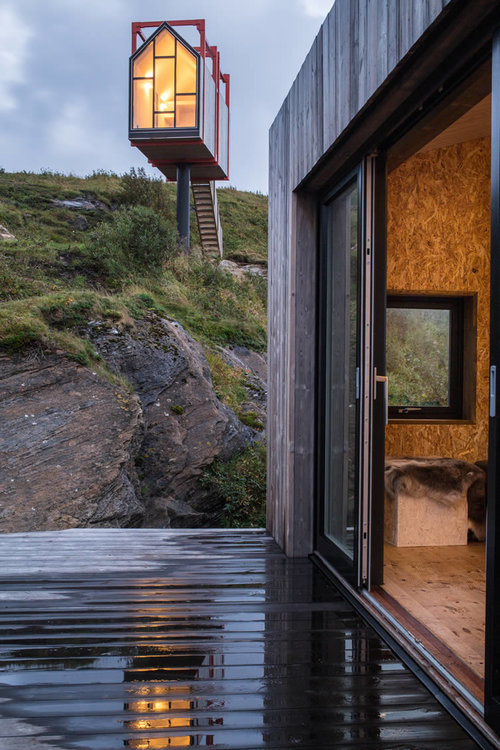
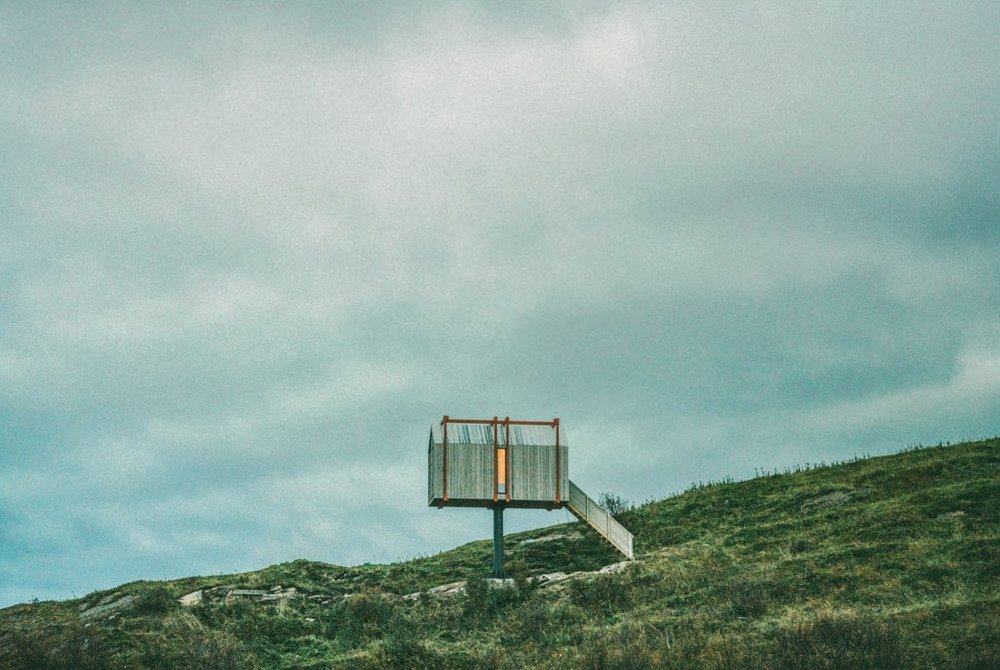
Refugium Fleinvær by Rintala Eggertsson Architects and TYIN Tegnestue
The project treats the cultural heritage of the place with great respect. A modern interpretation of the Sami people’s traditional storehouse – the njalla – is built on the trunk of a chopped tree at the top of the hill to be used as a place for immersion and reflection. Placed on a pillar, the structure offers breathtaking views of the Norwegian sea.

Inflatable bubble hotel by Eye in the Sky in the Anantara Golden Triangle Elephant Camp&Resort (also header image)
The Anantara Golden Triangle Elephant Camp & Resort in Thailand offers a memorable close-to-nature experience of spending the night in the company of elephants thanks to the so-called ‘jungle bubbles’. Located across 650,000 square meters of northern Thailand’s ancient jungle on a hill overlooking the Mekong and Ruak rivers, the resort is famous for its camp that was set up to help elephants in need. The offered activities are meant to allow elephant caretakers to raise funds without forcing the animals into activities they might not enjoy.
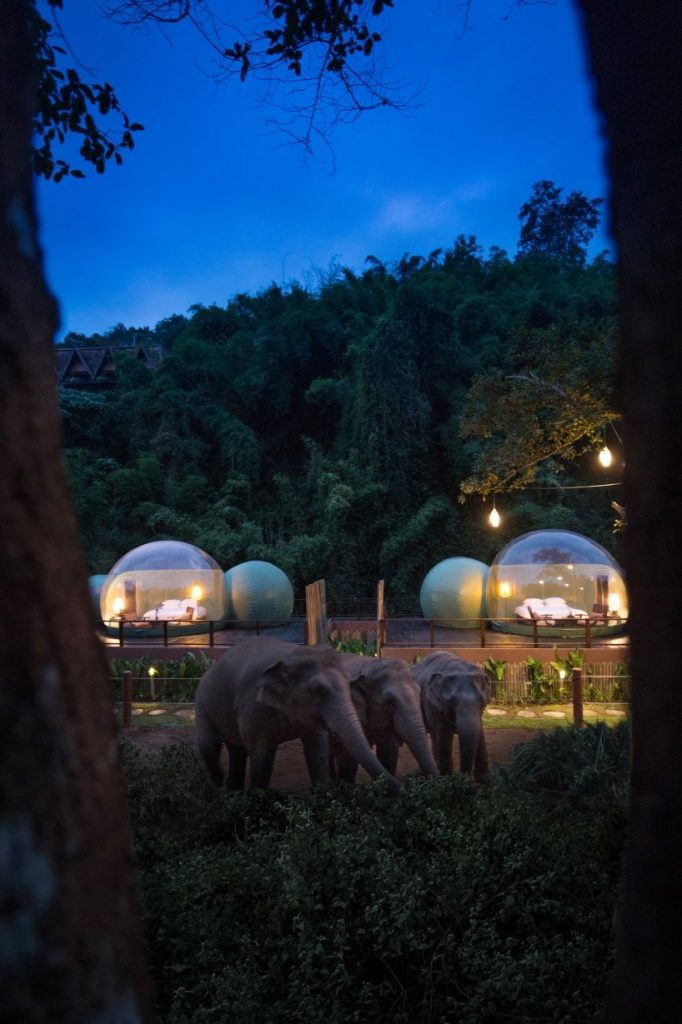
Inflatable bubble hotel by Eye in the Sky in the Anantara Golden Triangle Elephant Camp&Resort
Custom designed by the Spanish agency Eye in the Sky, the transparent structures are made of high-tech polyester fabric using exclusive Précontraint Serge Ferrari technology. Perched on raised wooden decks, the bubbles offer uninterrupted views of the elephants, as well as the lush landscape and the stars above. The accommodation is fully air-conditioned, offering 22 square meters of indoor floor space, a bedroom and living area, seating under the transparent roof, and an enclosed, nontransparent en-suite shower.
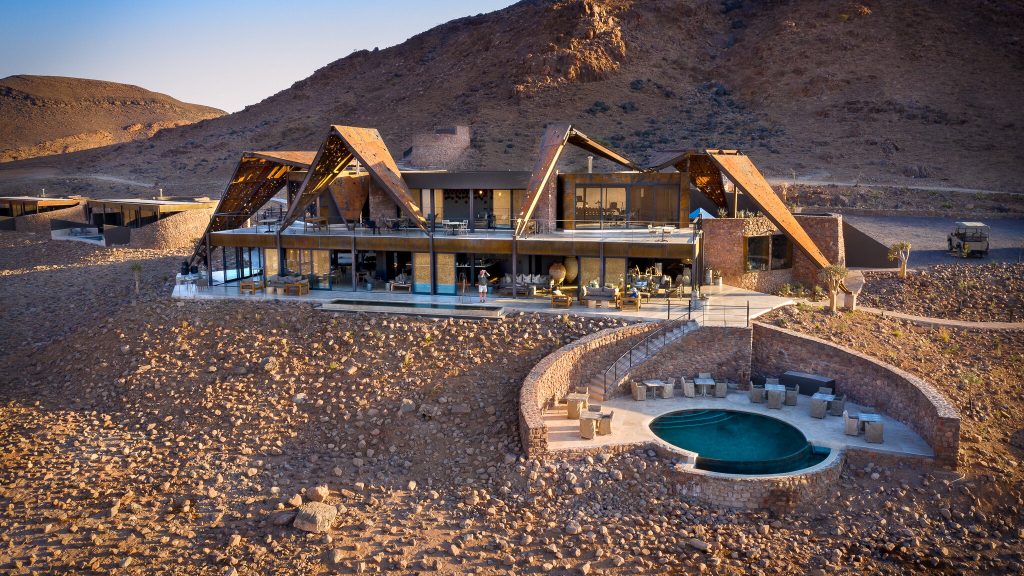
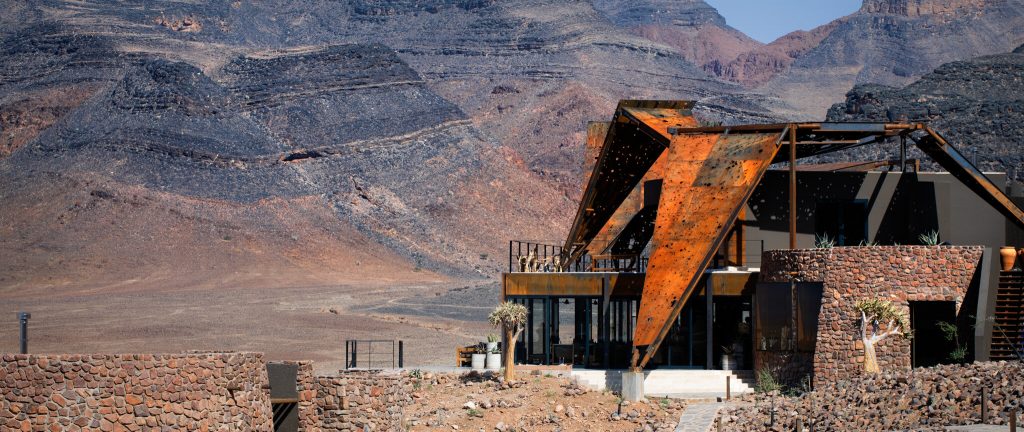
andBeyond Sossusvlei Desert Lodge by Fox Browne Creative and Jack Alexander
Fox Browne Creative, an architectural team with offices in Johannesburg and London, has collaborated with the South African architect Jack Alexander to design andBeyond’s Sossusvlei Desert Lodge offering a unique hotel experience in the middle of the Namib desert in Namibia. The team was briefed to refurbish the existing building lodge from the 1990s using the same footprint and create a contemporary yet timeless architecture, while staying appropriate to the incredible natural landscape.
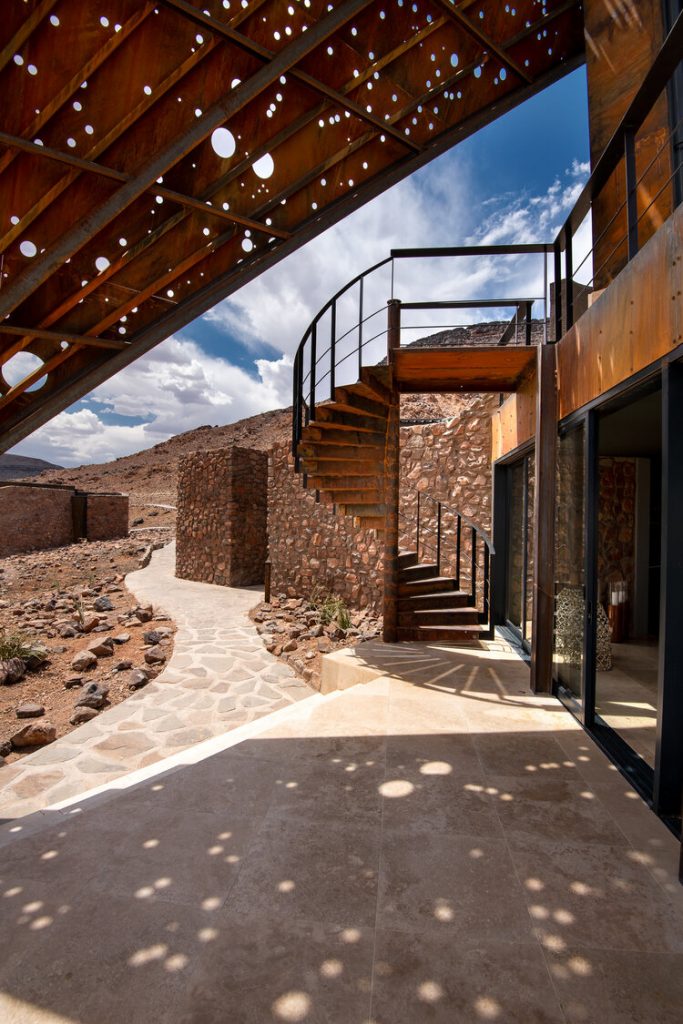
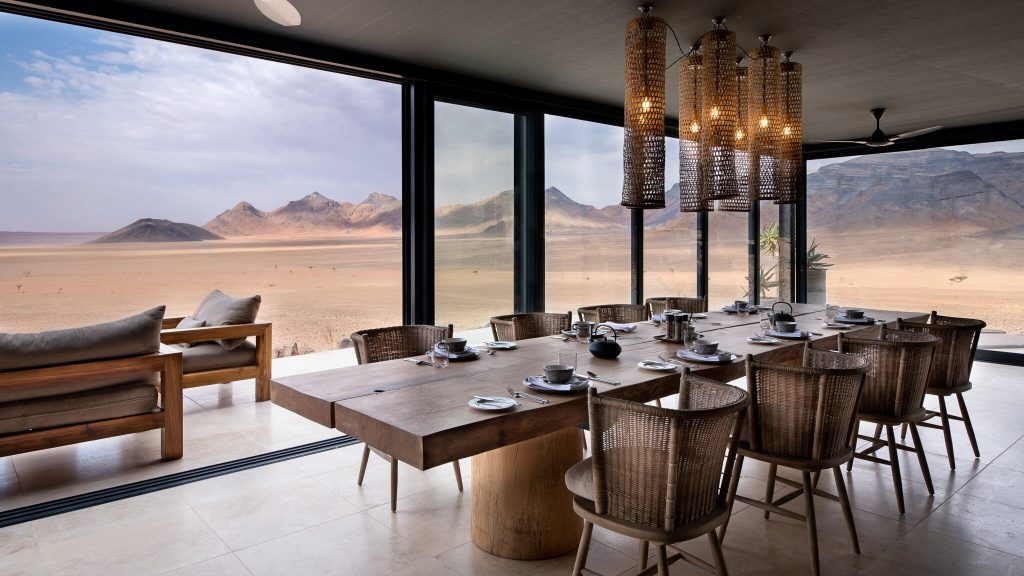
andBeyond Sossusvlei Desert Lodge by Fox Browne Creative and Jack Alexander
The original building was constructed without the consciousness and understanding of the natural environment, so the team sought to reduce the human impact on the extremely sensitive natural environment. Architecturally the lodge is blending in with the natural topography and colors, with its series of geometric lines made from glass, rock and steel contrasting to the organic curves and of the surrounding sand dunes. The interiors reflect a chic desert inspired minimalism with careful attention paid to fundamental guest comfort and great views of the desert, making the lodge one of the best desert destinations of the world.
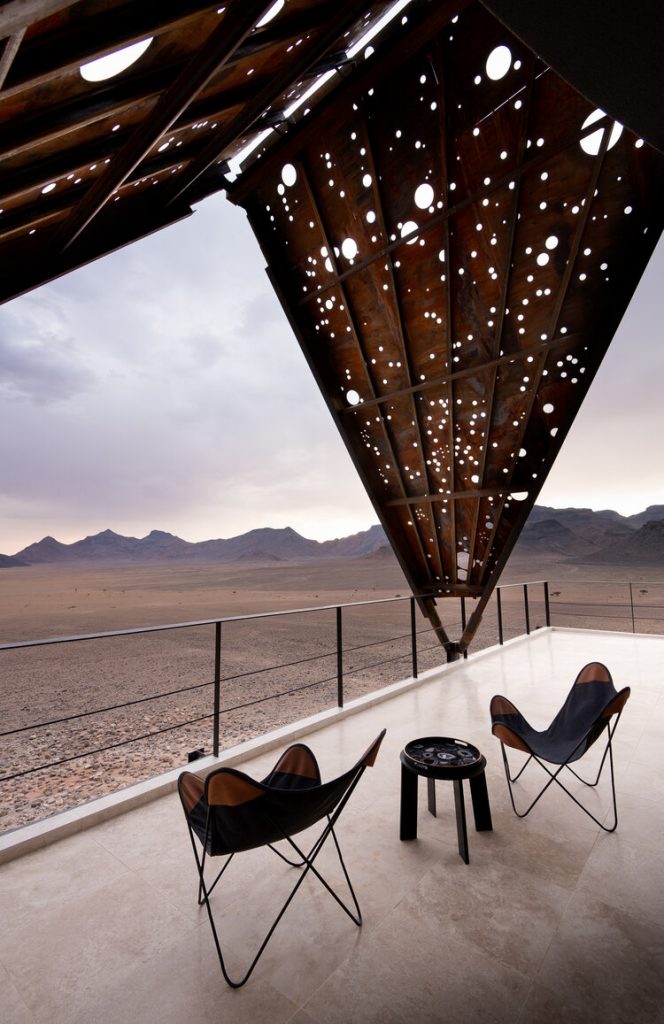
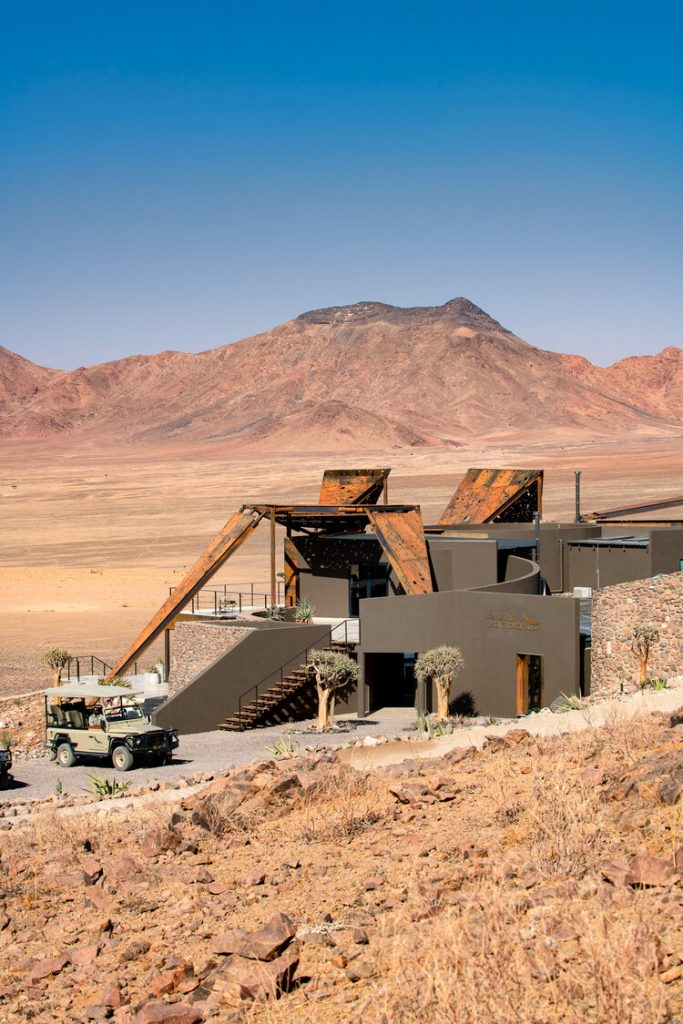
andBeyond Sossusvlei Desert Lodge by Fox Browne Creative and Jack Alexander
Externally, the roofs have been clad in PV panels. As the temperatures in the desert may reach over 50 degrees Clecius, the panels allow enough solar energy to ensure the lodge is entirely self-sustained. The electricity generated is then used to power a series of environmentally responsive air-conditioning and water recycling systems to ensure the lodge positively affects the environment from which its design was derived.